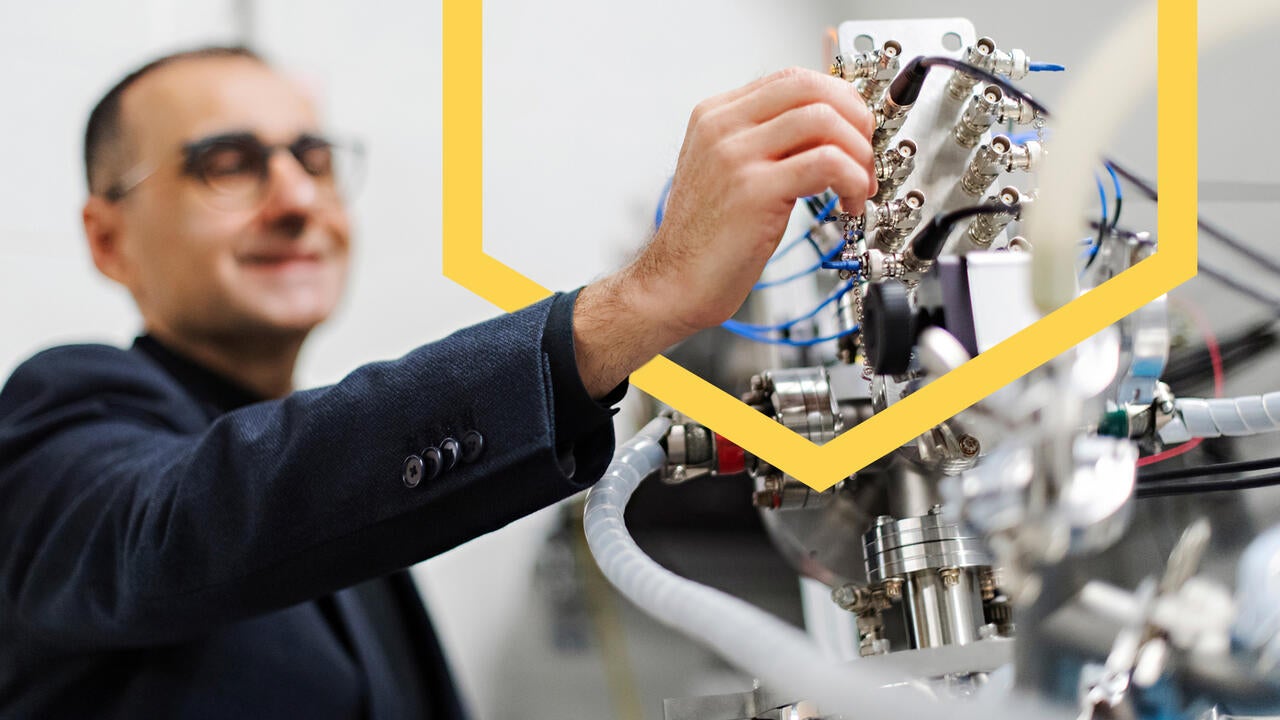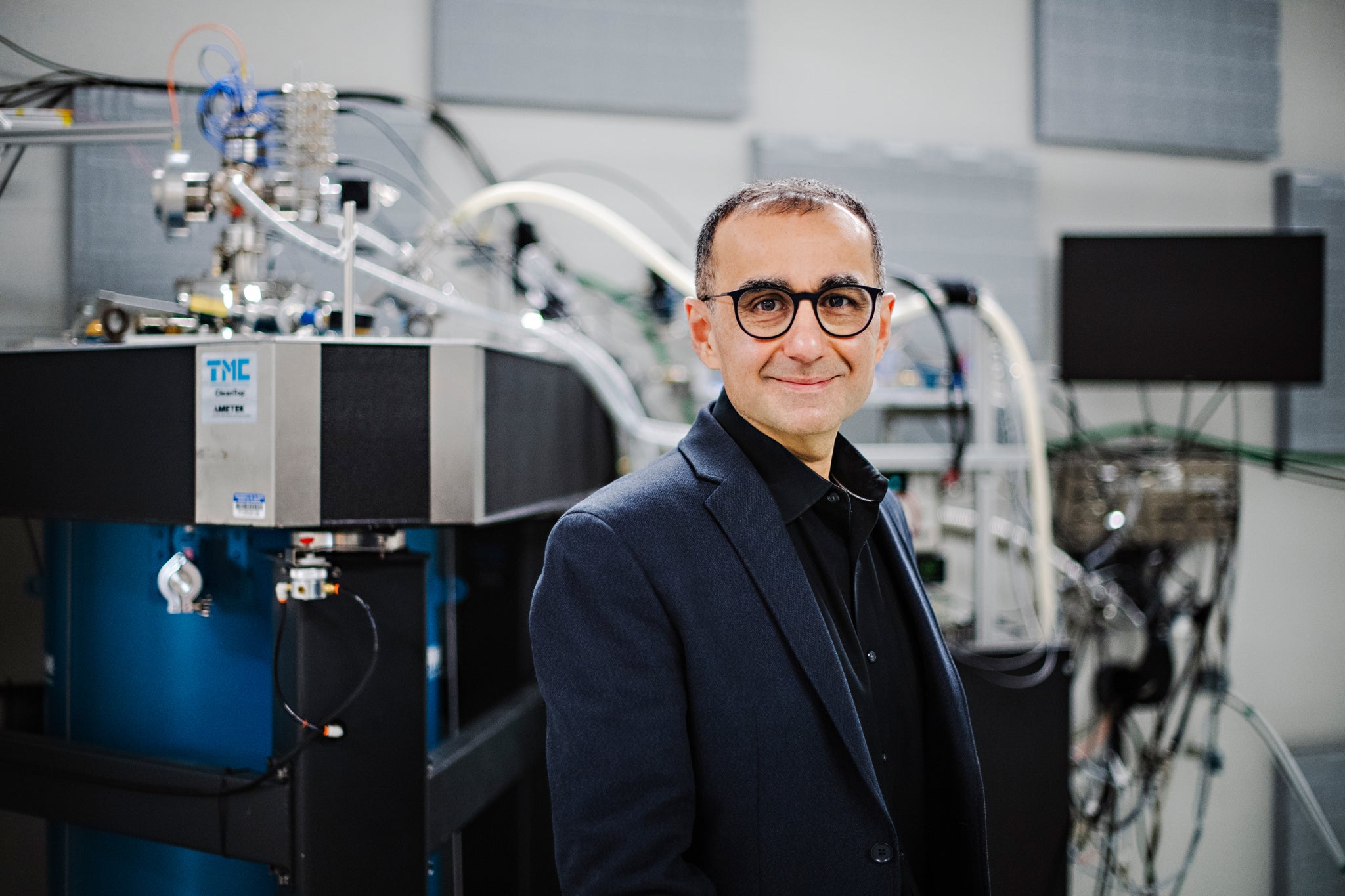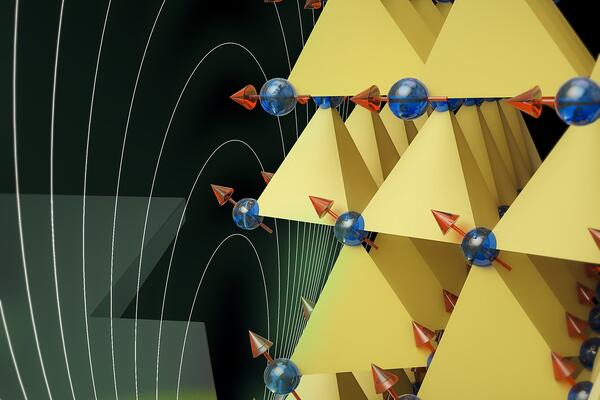
New quantum imaging could lead to a better understanding of diseases
Researchers at Waterloo are developing a technique to take MRI capabilities down to the atomic scale

Researchers at Waterloo are developing a technique to take MRI capabilities down to the atomic scale
By Kayleigh Platz Institute for Quantum Computing
Raffi Budakian
Professor, Faculty of Science
> Waterloo Endowed Chair in Nanotechnology
> Institute for Quantum Computing
MRI works on the millimetre scale. Budakian’s lab uses the angstrom scale, a metric unit of length that is 10 million times smaller than a millimetre, as a measurement for exploring molecular imaging. The very precise angstrom scale requires extreme sensitivity in order to measure at the molecular level instead of the physical.
Using quantum sensors, Budakian’s team has designed a new way to generate magnetic fields on nanometre light scales for imaging and controlling nuclear spins. Because spins are also quantum mechanical, they are harnessed for detection purposes using very intense magnetic fields on very short length scales of the order of 100 nanometres — which makes the MRI using the millimetre scale seem huge in comparison.
Budakian is excited about this new imaging technique, which his team calls nuclear magnetic resonance diffraction (NMRD) because diffraction is a very powerful tool for analyzing materials that have a crystalline structure, such as proteins.
“At a high level this work could be used to develop quantum technologies to study protein structure and dynamics,” he says. “Understanding the structure of proteins is vital to drug development.”
These materials include biologically relevant samples of virus particles and proteins that cause diseases such as Parkinson’s and Alzheimer’s. Gaining a clear image of what these materials look like could have an immense impact on medicine, from better treatment to a deeper understanding of complex biomolecules.
Now that Budakian’s team has found a way to do diffraction with NMR, with precise measurements that are accurate to a fraction of an angstrom, they are ready to put their machine and technique through extensive testing.
“Our immediate goal is to do 3D crystal structure determination using NMRD, which is what we need for imaging protein structures,” Budakian says. “My hope is that this will excite others to look at this technique and then develop it further.”
Teamwork and interdisciplinary research are paramount to moving ideas and theories into real world applications, Budakian notes. He looks at his team as a perfect of example of how ideas can become innovations. He works with a community of people at IQC with varied backgrounds in science, mathematics and engineering: theorists who ask questions, experimentalists who can realize the theory into practice, and fabricators who spend their time thinking about how to make these devices work better and better. In the lab, all the components come together to create satisfying results.
“In a university environment, it’s sometimes luck that lands the right student or postdoc at your door who is excited to work on your project,” he says. “At Waterloo, our research facilities and capabilities make this happen.”
With financial support from Transformative Quantum Technologies at Waterloo, Budakian’s miniscule imaging technique is poised to lead to big impacts on the future of human health and well-being.
Subscribe to get updates on the latest research and innovation at the University of Waterloo. From breakthroughs in quantum technology and cybersecurity to leading-edge climate research and innovations in health care, you’ll get to know some of Waterloo’s most inspiring minds.

Read more
Researcher Suzanne Kearns pioneers the Waterloo Institute for Sustainable Aeronautics

Read more
Clearco challenges the status-quo with unbiased investment opportunities for entrepreneurs

Read more
A new imaging technique using quantum science may lead to novel drug therapies and treatment options, a recent study has found.
The University of Waterloo acknowledges that much of our work takes place on the traditional territory of the Neutral, Anishinaabeg and Haudenosaunee peoples. Our main campus is situated on the Haldimand Tract, the land granted to the Six Nations that includes six miles on each side of the Grand River. Our active work toward reconciliation takes place across our campuses through research, learning, teaching, and community building, and is co-ordinated within the Office of Indigenous Relations.